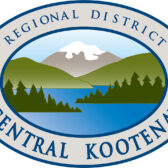Practical Financial Solutions — Tax shocks for retirees
You have been diligently paying your income taxes for many years and perhaps, in most years, you have enjoyed a tax refund. Then you retire – and in your first year of retirement you get a (perhaps expensive) surprise: no tax refund. Instead, you take a ‘tax payable’ hit.
When you enter retirement, the sources of income you receive change. Your employment income is typically replaced by the Canada Pension Plan (CCP), Old Age Security (OAS), other pension income and withdrawals from personal savings. Often not enough tax is withheld from each of these sources in the first year – and you will end up with an amount of tax payable on April 30.
You can avoid that tax shock by using these strategies:
Know your tax obligation and all the deductions and credits available to you
- Be aware of your potential tax obligation by completing a pro-forma tax calculation and set aside money to cover your tax liability.
- If you were 65 or older on December 31, 2014, you may be eligible for the non-refundable age amount tax credit.
- You may be eligible for the non-refundable disability tax credit if you, your spouse or an eligible dependent qualify due to a severe and prolonged impairment.
- You can claim eligible medical expenses paid in any 12-month period ending in that taxation year for which you have not been reimbursed. Keep your receipts.
- You may qualify to jointly elect and split up to half of your eligible pension income with your lower-income spouse.
Watch for installment payments
- In the second year of your retirement, you may receive a notice from CRA indicating you are required to make installment tax payments. You’ll receive this notice if the tax owing on your last return was greater than $3,000. If the installments are not made on time, interest will be charged and penalties may be applied.
Reduce or eliminate the amount of installment payments by having more tax withheld from CPP, OAS or pension income
- To increase tax withheld from CPP and OAS benefits, send completed CRA Form ISP 3520, Request for Income Deductions to your Service Canada Office.
- To increase tax withheld from pension income, send completed CRA Form TD1 2015 Personal Tax Credits Return to the pension plan administrator. If you live in Quebec, complete both the TD1 Form and Form TP1015.3-V Source Deductions Return.
To be sure you completely avoid tax shock and preserve your retirement income at its best level, talk to your tax professional and professional advisor today.
This column, written and published by Investors Group Financial Services Inc. (in Québec – a Financial Services Firm), and Investors Group Securities Inc., is sponsored by Roger Higgins, a BA, CFP Division Director for Investors Group in the Kootenays. For all your financial planning needs, contact Roger at 250-352-7777 of email at [email protected]

























